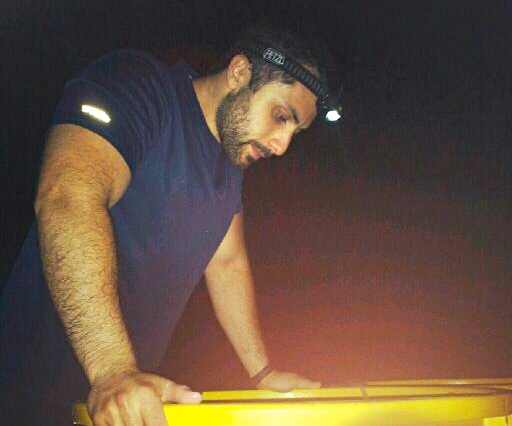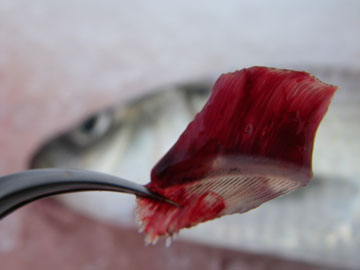Difference between revisions of "Jonathan Velotta"
(→Teaching Experience) |
|||
| Line 1: | Line 1: | ||
| − | [[Image: | + | [[Image:JVPL.jpg|right]] |
== Contact Information== | == Contact Information== | ||
Revision as of 19:48, 20 January 2013
Contents
Contact Information
Department of Ecology and Evolutionary Biology
University of Connecticut
75 North Eagleville Road
Storrs, CT 06269
Office: Pharmacy/Biology 210
Phone: 860-486-4694
E-mail: jonathan.velotta@uconn.edu
About Me
I am currently a doctoral student at the University of Connecticut, working in the lab of Dr. Eric Schultz.
My research interests are broad, but my work centers around the physiological, molecular and evolutionary ecology of fishes
I'm also on Facebook
Education
Ph.D. Ecology and Evolutionary Biology
2008-present
University of Connecticut, Storrs CT
B.S. Biology
2003-2007
Fairfield University
Research Experience: (1) The role of testosterone in male rat sexual behavior, with Dr. Shannon Harding. (2) Avian stress physiology, with Dr. Brian Walker.
Dissertation Research
My dissertation research focuses on answering questions regarding the osmoregulatory system in bony fishes, that is, the set of physiological mechanisms by which water and ion homoestasis is maintained. Specifically, I am investigating both the micro-evolution and the ontogeny of the osmoregulatory system in an anadromous shad known as the alewife (Alosa pseudoharengus)
The reason I have chosen to study alewives is because of their interesting life history. Most alewives are anadromous - adults inhabit the open ocean and return yearly to small, freshwater systems to spawn. In addition, multiple populations of alewives have been independently restricted to freshwater systems year-round - a phenomenon known as land-locking. Land-locking in alewives provides a unique opportunity to investigate the specific physiological and molecular adaptations made by fish when they transition from living in seawater to specializing in freshwater - environments that require drastically different methods of osmoregulating. Not only does this represent a significant gap in our knowledge of osmoregulatory physiology, but changes to this system that permitted organisms to specialize in FW represent major evolutionary transitions
My research focuses mainly on the osmoregulatory processes of the gills, since gills are the main site of ion exchange in fish. I will look at how survival, plasma ion content, and gene expression at several candidate osmoregulatory loci differ between landlocked and anadromous alewives.
Teaching Experience
NRE 2345 - Introduction to Fisheries and Wildlife (co-instructor)
BIO 1102 - Foundations of Biology
BIO 1108 - Principles of Biology
EEB 3247 - Limnology
EEB 4200 - The Biology of Fishes
MCB 5427 - Laboratory Techniques in Functional Genomics
Publications
Harding, S.M., and J.P. Velotta. 2011. Comparing the relative amount of testosterone required to restore sexual arousal, motivation, and performance in male rats. Hormones and Behavior: 59(5), 666-673
Professional Affiliations and Honor Societies
Society for Integrative and Comparative Biology
American Society of Ichthyologists and Herpetologists
American Fisheries Society
Sigma Xi
Phi Beta Kappa



